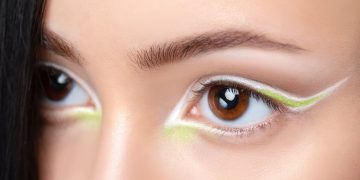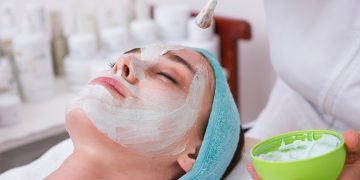Dry skin can be uncomfortable and challenging to manage, especially when it becomes flaky, tight, or irritated. Unlike oily or combination skin, dry skin lacks the moisture and oils it needs to stay hydrated and protected. Therefore, it is essential to follow a daily skincare routine tailored to replenish moisture, repair the skin barrier, and keep it soft, smooth, and healthy.
In this article, we will discuss the essential steps for a dry skin care routine, the best products for each step, and tips to enhance skin hydration and prevent moisture loss.
Understanding Dry Skin
Dry skin occurs when the skin’s natural oils (sebum) and moisture content are insufficient. This can lead to tightness, redness, flaky patches, and increased sensitivity. While dry skin can be due to genetics, environmental factors such as cold weather, low humidity, or exposure to harsh skincare products can exacerbate the problem.
Dry skin typically lacks the proper moisture retention, making it more susceptible to irritation, premature aging, and visible fine lines. Therefore, the key to managing dry skin is to focus on hydration, moisture retention, and barrier repair.
Step-by-Step Daily Skincare Routine for Dry Skin
To restore and maintain hydration, dry skin needs a routine that focuses on gentle cleansing, deep moisture, and protection. Here are the essential steps:
1. Gentle Cleansing (Morning and Night)
Why It’s Essential:
Cleansing is the first and most important step in any skincare routine, as it removes dirt, sweat, oils, and environmental pollutants. However, for dry skin, it’s crucial to choose a cleanser that does not strip the skin of its natural oils. Harsh, foaming cleansers or those with strong fragrances and alcohol can leave the skin feeling tight and dry, worsening the condition.
What to Look For:
- Hydrating or Cream-based Cleansers: Look for creamy or oil-based cleansers that gently remove dirt and makeup without dehydrating your skin.
- Non-foaming or Mild Cleansers: Cleansers that don’t foam too much tend to be less stripping.
- Fragrance-free Formulas: Fragrances can irritate dry skin, so opt for fragrance-free options.
- Sodium Lauryl Sulfate-Free Cleansers: Avoid cleansers with sulfates, as these can dry out the skin.
Recommended Ingredients:
- Glycerin: A humectant that helps pull moisture into the skin.
- Ceramides: Help to rebuild and maintain the skin’s natural barrier.
- Aloe Vera: Soothes and hydrates dry skin.
Example Products:
- CeraVe Hydrating Cleanser
- La Roche-Posay Toleriane Hydrating Gentle Cleanser
- Vanicream Gentle Facial Cleanser
How to Use:
- Use a gentle cleanser in the morning and evening.
- Apply to damp skin, massaging gently in circular motions.
- Rinse with lukewarm water (avoid hot water, as it can further dry out your skin).
2. Hydrating Toner (Optional)
Why It’s Essential:
While toners are often skipped, they can be an essential step for dry skin if used correctly. Hydrating toners provide an extra layer of moisture and help balance the skin’s pH levels after cleansing. They also help prepare your skin to absorb the following treatments better.
What to Look For:
- Alcohol-Free Toners: Avoid toners with alcohol or astringents, as these can be drying and irritating.
- Hydrating Ingredients: Look for toners that contain humectants like hyaluronic acid, glycerin, and rose water, which can help attract and lock moisture into the skin.
Recommended Ingredients:
- Hyaluronic Acid: A powerful humectant that helps draw moisture into the skin.
- Glycerin: Helps to keep the skin hydrated.
- Rose Water: Known for soothing and calming properties.
Example Products:
- Klairs Supple Preparation Unscented Toner
- Thayers Alcohol-Free Rose Petal Witch Hazel Toner
- Neutrogena Hydro Boost Hydrating Toner
How to Use:
- After cleansing, apply toner to a cotton pad or your hands and gently pat it into the skin.
- Allow it to absorb fully before moving to the next step.
3. Targeted Treatments (Serums and Oils)
Why It’s Essential:
For dry skin, adding a hydrating serum or facial oil can provide deep nourishment and target specific issues, such as fine lines or dullness. These treatments are formulated with concentrated active ingredients that can penetrate deeper into the skin and offer better hydration, restoration, and rejuvenation.
What to Look For:
- Hydrating Serums: Look for serums with ingredients like hyaluronic acid, vitamin C, or peptides that replenish and hydrate the skin.
- Facial Oils: For extra moisture, facial oils can be added to lock in hydration. Oils like argan oil, jojoba oil, and rosehip oil are especially beneficial for dry skin.
- Peptides or Antioxidants: Peptides help to repair the skin barrier, while antioxidants protect against environmental damage.
Recommended Ingredients:
- Hyaluronic Acid: A go-to ingredient for skin hydration.
- Peptides: Help to rebuild the skin’s barrier and lock in moisture.
- Argan Oil or Rosehip Oil: Rich in fatty acids that deeply hydrate the skin.
Example Products:
- The Ordinary Hyaluronic Acid 2% + B5
- Estée Lauder Advanced Night Repair Serum
- Drunk Elephant Virgin Marula Luxury Facial Oil
How to Use:
- Apply a few drops of serum or facial oil after toner, before moisturizing.
- Pat gently into the skin and allow it to absorb.
4. Moisturizing (Morning and Night)
Why It’s Essential:
Moisturizing is arguably the most important step for dry skin. Moisturizers create a barrier that locks in hydration and prevents moisture loss. For dry skin, it’s important to choose a rich, emollient moisturizer that replenishes and retains moisture, especially in harsh environments.
What to Look For:
- Cream-Based Moisturizers: Choose thick, creamy formulas rather than light lotions.
- Non-comedogenic Moisturizers: Ensure that the product won’t clog pores or cause breakouts.
- Ceramides and Fatty Acids: These ingredients repair the skin barrier and prevent further moisture loss.
- Rich Moisturizers: A heavier moisturizer is best for dry skin as it provides long-lasting hydration.
Recommended Ingredients:
- Ceramides: Essential for repairing the skin’s natural barrier.
- Glycerin and Hyaluronic Acid: Both are excellent humectants that draw water into the skin.
- Fatty Acids: Help to lock in moisture and smooth the skin.
Example Products:
- CeraVe Moisturizing Cream
- Neutrogena Hydro Boost Water Gel
- Eucerin Advanced Repair Cream
How to Use:
- Apply a generous amount of moisturizer to your face and neck, gently massaging it into the skin.
- Use twice daily (morning and night), or as needed, depending on your skin’s dryness.

5. Sunscreen (Morning)
Why It’s Essential:
Sun protection is essential for all skin types, but it is especially important for dry skin. UV rays can damage the skin and impair the moisture barrier, leading to further dryness, premature aging, and increased sensitivity. A broad-spectrum sunscreen protects your skin from harmful UV rays while preventing moisture loss.
What to Look For:
- Broad-Spectrum SPF 30 or Higher: Choose a sunscreen with a minimum SPF of 30 that protects against both UVA and UVB rays.
- Hydrating Sunscreens: Look for sunscreens formulated with hydrating ingredients like hyaluronic acid, glycerin, or ceramides.
- Mineral Sunscreens: Mineral sunscreens containing zinc oxide or titanium dioxide are generally better for sensitive and dry skin, as they are less likely to cause irritation.
Recommended Ingredients:
- Hyaluronic Acid: A hydrating ingredient often found in sunscreen formulations.
- Ceramides: Strengthen the skin barrier while offering sun protection.
- Zinc Oxide and Titanium Dioxide: Provide broad-spectrum protection without irritating the skin.
Example Products:
- EltaMD UV Clear Broad-Spectrum SPF 46
- Neutrogena Hydro Boost Water Gel Lotion SPF 50
- La Roche-Posay Anthelios Melt-in Sunscreen Milk SPF 60
How to Use:
- Apply sunscreen every morning as the final step in your skincare routine.
- Reapply every two hours if you’re spending time outdoors.
Additional Tips for Dry Skin Care
- Use a Humidifier: In dry indoor environments (especially in winter), using a humidifier can help maintain moisture in the air and prevent your skin from becoming dry and flaky.
- Avoid Hot Showers: Hot water can strip the skin of its natural oils. Use lukewarm water instead.
- Avoid Harsh Exfoliation: Over-exfoliating can damage the skin’s barrier and worsen dryness. Stick to gentle exfoliation with mild acids or physical exfoliants only once or twice a week.
- Stay Hydrated: Drink plenty of water throughout the day to hydrate your skin from the inside out.
Conclusion:
Caring for dry skin requires consistency and attention to the right steps that restore moisture and protect the skin’s barrier. By following a comprehensive routine—starting with gentle cleansing, applying hydrating treatments, moisturizing, and using sunscreen—you can significantly improve the hydration and overall health of your skin.
Remember, the goal for dry skin is to maintain hydration and repair the skin barrier. With the right skincare products and habits, your dry skin will feel more comfortable, soft, and balanced in no time.












































